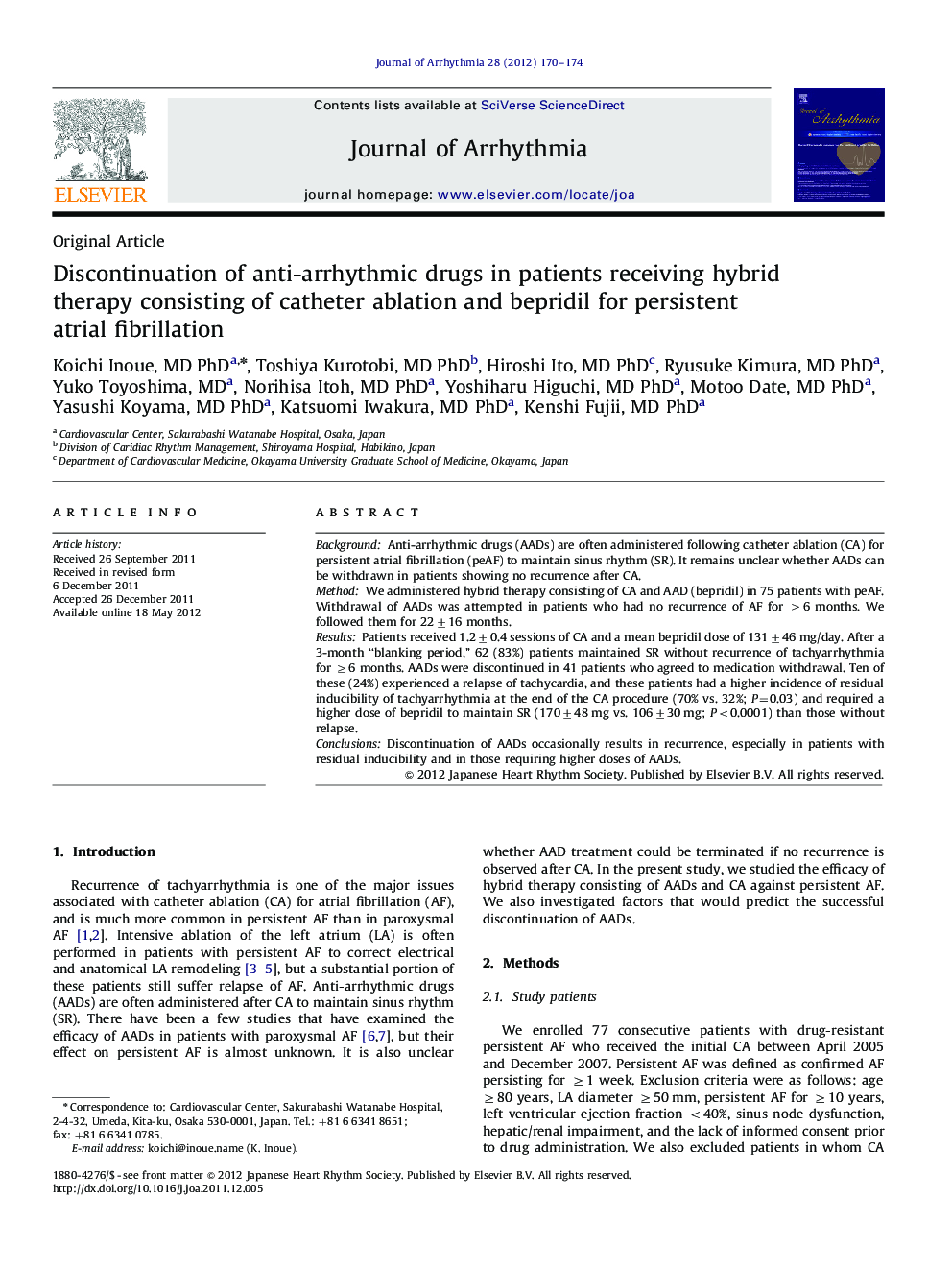| Article ID | Journal | Published Year | Pages | File Type |
|---|---|---|---|---|
| 2957774 | Journal of Arrhythmia | 2012 | 5 Pages |
BackgroundAnti-arrhythmic drugs (AADs) are often administered following catheter ablation (CA) for persistent atrial fibrillation (peAF) to maintain sinus rhythm (SR). It remains unclear whether AADs can be withdrawn in patients showing no recurrence after CA.MethodWe administered hybrid therapy consisting of CA and AAD (bepridil) in 75 patients with peAF. Withdrawal of AADs was attempted in patients who had no recurrence of AF for ≥6 months. We followed them for 22±16 months.ResultsPatients received 1.2±0.4 sessions of CA and a mean bepridil dose of 131±46 mg/day. After a 3-month “blanking period,” 62 (83%) patients maintained SR without recurrence of tachyarrhythmia for ≥6 months. AADs were discontinued in 41 patients who agreed to medication withdrawal. Ten of these (24%) experienced a relapse of tachycardia, and these patients had a higher incidence of residual inducibility of tachyarrhythmia at the end of the CA procedure (70% vs. 32%; P=0.03) and required a higher dose of bepridil to maintain SR (170±48 mg vs. 106±30 mg; P<0.0001) than those without relapse.ConclusionsDiscontinuation of AADs occasionally results in recurrence, especially in patients with residual inducibility and in those requiring higher doses of AADs.
